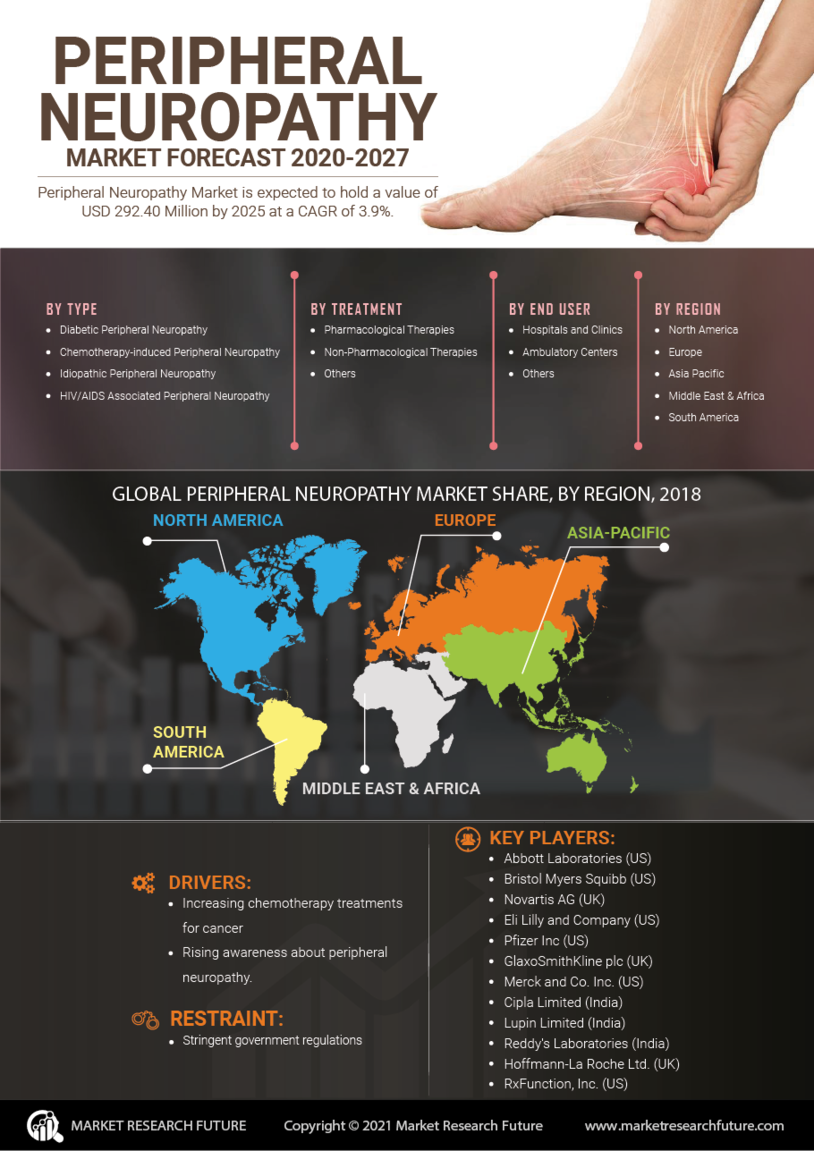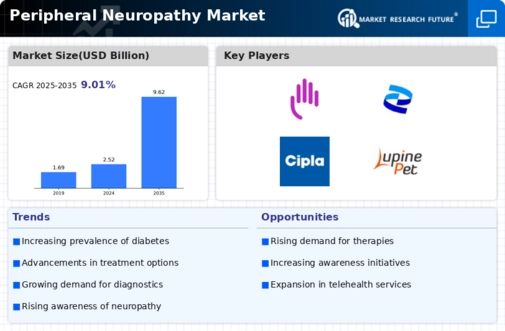Growing Geriatric Population
The growing geriatric population is a significant driver of the Peripheral Neuropathy Market. As individuals age, the risk of developing peripheral neuropathy increases, often due to age-related conditions such as diabetes, vitamin deficiencies, and other chronic diseases. According to demographic data, the proportion of individuals aged 65 and older is projected to rise substantially in the coming years, leading to a higher incidence of neuropathic conditions. This demographic shift necessitates the development of targeted treatment options and comprehensive care strategies within the Peripheral Neuropathy Market. Healthcare providers are likely to focus on improving patient outcomes through tailored therapies, thereby enhancing the overall market landscape.
Rising Prevalence of Diabetes
The increasing prevalence of diabetes is a notable driver for the Peripheral Neuropathy Market. Diabetes is one of the leading causes of peripheral neuropathy, with studies indicating that approximately 60 to 70% of individuals with diabetes may experience some form of nerve damage. This alarming statistic underscores the urgent need for effective treatment options and management strategies within the Peripheral Neuropathy Market. As the global population ages and lifestyle-related diseases become more common, the demand for therapies targeting diabetic neuropathy is expected to rise. Consequently, pharmaceutical companies are likely to invest in research and development to create innovative solutions, thereby expanding their market presence and addressing the growing patient population.
Increased Focus on Pain Management
The increased focus on pain management is driving growth in the Peripheral Neuropathy Market. Chronic pain associated with peripheral neuropathy can significantly impact patients' quality of life, leading to a heightened demand for effective pain relief solutions. Healthcare systems are increasingly prioritizing pain management strategies, which include pharmacological treatments, physical therapy, and alternative therapies. This shift in focus is prompting pharmaceutical companies to develop new analgesics and adjunct therapies specifically targeting neuropathic pain. As awareness of the importance of pain management continues to grow, the Peripheral Neuropathy Market is likely to expand, offering a wider array of treatment options to meet patient needs.
Advancements in Neurological Research
Recent advancements in neurological research are propelling the Peripheral Neuropathy Market forward. Innovative studies are uncovering the underlying mechanisms of nerve damage and regeneration, leading to the development of novel therapeutic approaches. For instance, the exploration of neuroprotective agents and regenerative medicine has shown promise in treating various forms of peripheral neuropathy. The market is witnessing a surge in clinical trials aimed at evaluating the efficacy of these new treatments, which could potentially reshape the therapeutic landscape. As researchers continue to unveil new insights into nerve health, the Peripheral Neuropathy Market is likely to benefit from an influx of cutting-edge therapies that address unmet medical needs.
Emerging Technologies in Treatment Delivery
Emerging technologies in treatment delivery are reshaping the Peripheral Neuropathy Market. Innovations such as telemedicine, wearable devices, and digital health platforms are enhancing patient access to care and treatment options. These technologies facilitate remote monitoring and personalized treatment plans, allowing healthcare providers to tailor interventions based on individual patient needs. The integration of technology into the management of peripheral neuropathy not only improves patient engagement but also streamlines the delivery of care. As these technologies continue to evolve, they are expected to play a crucial role in the Peripheral Neuropathy Market, potentially leading to improved patient outcomes and satisfaction.


















Leave a Comment